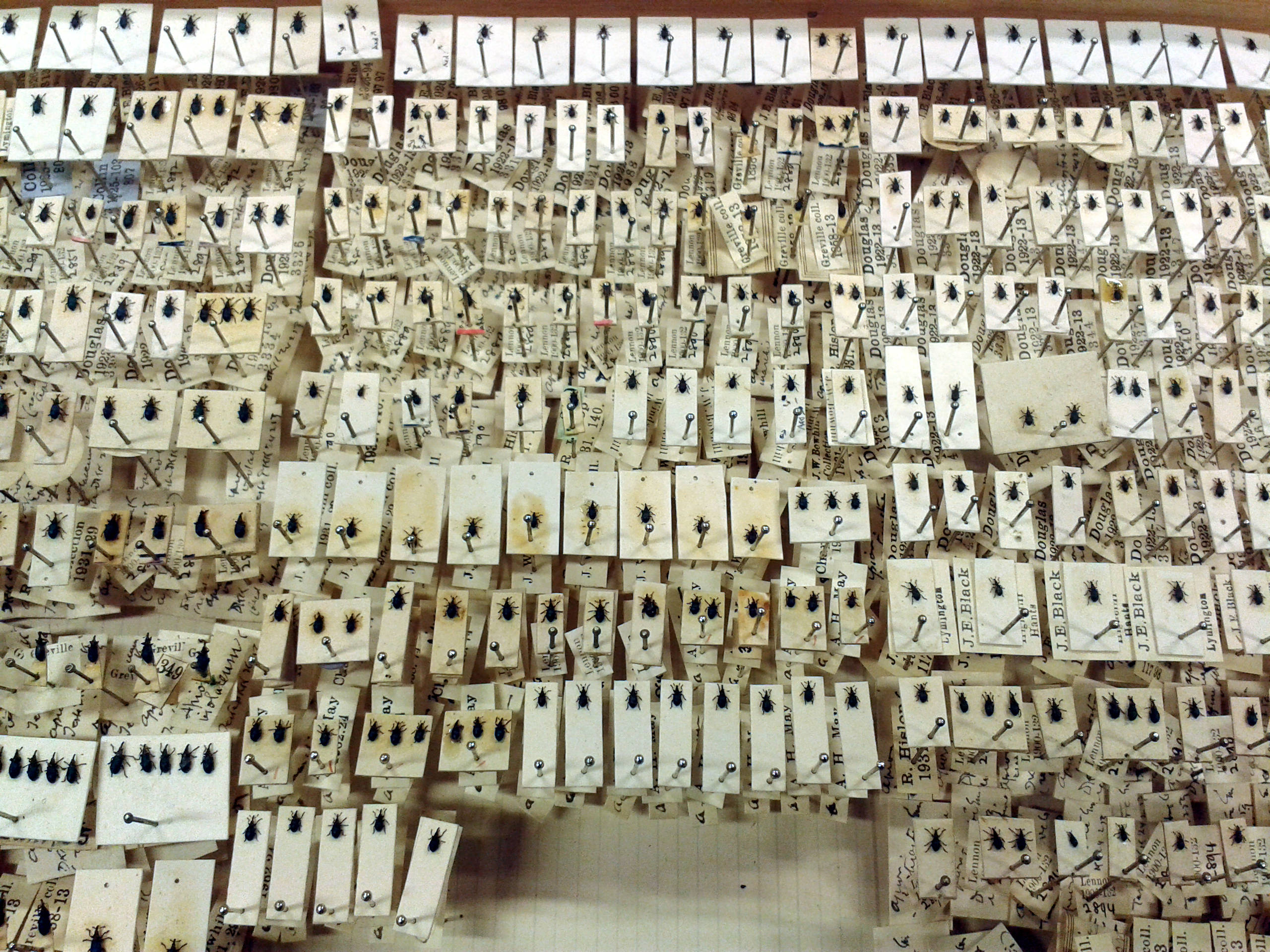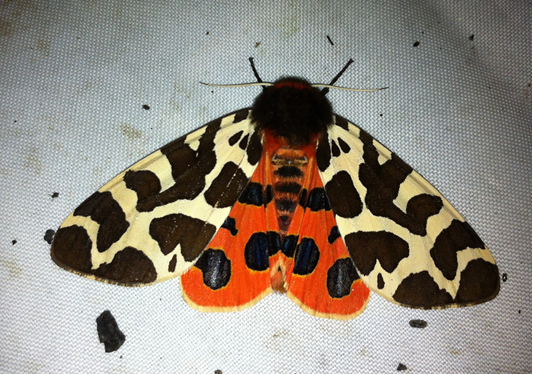11 April 2017 by Chris Cathrine | Comments: 0
Share this article:

In September 2016, Director Chris Cathrine carried out invertebrate surveys at Scottish Wildlife Trust’s (SWT) Balgavies Loch reserve using Caledonian Conservation’s bugvac (a modified leaf blower that sucks bugs into a net). Bugvac is excellent at turning up invertebrates such as spiders and beetles hiding deep within vegetation that would be difficult to collect or missed entirely using traditional collection methods. Recently we identified the species collected, however some of these invertebrates can be very difficult to differentiate from one another, even using the microscopes, identification keys and reference collections we have in the office.
Luckily the National Museum of Scotland Collection Centre in Edinburgh allows access to their collections for reference and research, giving us the opportunity to compare anatomical features of our samples against curated specimens in the collection. In Britain there are around 4,000 known beetle species and, just like people, individuals of each species are unique, coming in a natural range of shapes, colours and sizes. Around a quarter of all beetles are members of the Staphylinidae family (rove beetles), many of which show only very minute physicals differences from one another. A good reference collection with a number of specimens of the same species collected from different geographical locations can prove very useful in aiding identification.
Despite the difficulty of identifying some species, the information gained can be very useful for making informed decisions about changes to land management. Since many invertebrate species require very specific microhabitats or host plants, they are often excellent indicators of habitat quality and change. The conservation status and habitat preferences of the species identified in different parts of Balgavies Loch reserve will help SWT plan how the site can be best managed for a wide range of wildlife in the future.
Check out National Museum of Scotland’s website for more information about their excellent resources.
The SWT Balgavies Loch invertebrate report is also available to read via the Caledonian Conservation Ltd website, here.
Visit SWT's website to learn more about Balgavies Loch and their other reserves.
20 November 2016 by Chris Cathrine | Comments: 0
Share this article:

Caledonian Conservation Ltd had completed several surveys for Scottish Wildlife Trust (SWT) since the company was formed in 2010. These surveys have included protected mammals, bryophytes and invertebrates (terrestrial and aquatic). Both Caledonian Conservation Ltd and SWT share a commitment to making as much of our work available publicly (within legal constraints), and we are pleased to publish three historic reports online. You can download these, and other documents, from the Caledonian Conservation Ltd publications page.
The reports include:
Jupiter Urban Wildlife Centre bryophyte survey (2010): 24 species of bryophytes were recorded, and interpretation notes and habitat management recommendations are included in the report.
Jupiter Urban Wildlife Centre water vole survey (2010): no water voles were found, and habitat was considered sub-optimal, however habitat management recommendations are included in the report.
Cathkin Marsh invertebrate survey (2013): the survey included terrestrial and aquatic invertebrates and 201 species were recorded, including Northern arches moth (Apamea zeta - Nationally Scarce) and garden tiger moth (Arctia caja - Scottish Biodiversity List). Interpretation notes and habitat management recommendations are also included in the report.